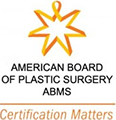Preventing Capsular Contracture with Acellular Dermal Matrices
September 2, 2014
Atlanta plastic surgery, breast surgery complications, Cumming plastic surgeon, Cumming plastic surgery, Rapid City cosmetic surgery
When any foreign object is introduced into the body, it is the body’s natural reaction to form a kind of coating, or “capsule,” of scar tissue around it. In the case of breast implants used during either breast augmentation or breast reconstruction, this natural immune response can be helpful. As long as the capsule remains soft, it helps to keep the implant stable and in the correct place. Some implants are even equipped with a textured surface in order to facilitate this process. At times, however, these capsules can become thick and hard, a phenomenon called capsular contracture. When this occurs, the breast grows increasingly firm and rigid, eventually shrinking or taking on an abnormal shape and becoming extremely painful to the touch. The most accurate estimates suggest that the condition occurs in somewhere between 9 percent and 15 percent of breast implant recipients, making it one of the most frequently occurring breast augmentation complications.
Once capsular contracture occurs, breast revision surgery is often performed to alleviate the symptoms. During this procedure the breast implant is usually removed, along with the enclosing capsule or tissue, and replaced with a new implant in a slightly different location (below the muscle if the previous implant was above the muscle, for example). While this does alleviate the problem in the short term, it does not guarantee that the capsular contracture will not recur, and so a great deal of research is being devoted to determining ways that capsular contracture can be prevented.
Recently, a growing number of studies have suggested that the rate of capsular contracture can be significantly reduced by placing an acellular dermal matrix (or ADM) between the implant and the natural breast tissue. I have performed extensive research on this subject and effectively utilized this material in many breast enhancement procedures. Originally developed as an alternative to skin grafting in burn patients, an acellular dermal matrix is composed of skin from which the cells have been removed, leaving behind a sterile framework or “lattice” of tissue that the patient’s own cells can grow into and eventually replace. Ideally, this material allows the body to integrate itself into the surface of the implant as it heals, to create a natural and pliable connection rather than a thick capsule of scar tissue.
If you have any questions or are interested in a breast procedure that I offer, please contact us today to schedule a consultation. Connect with me, Dr. Hunter Moyer, on Facebook, Twitter, and Google+ for the latest plastic surgery news.









